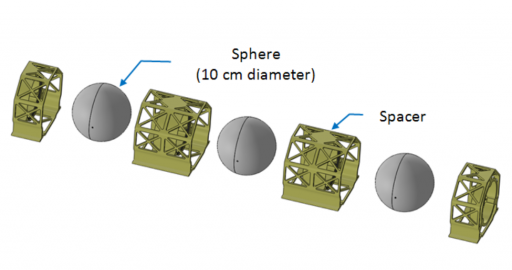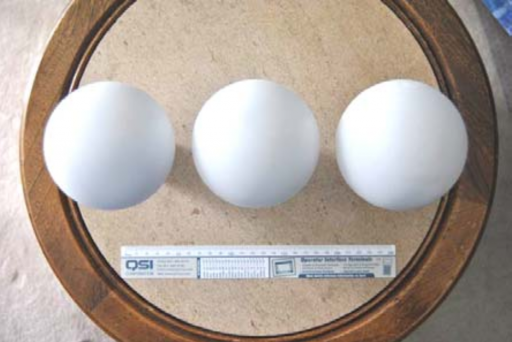POPACS


Three passive spherical POPACS Satellites – Polar Orbiting Passive Atmospheric Calibration Spheres – are launched in a CubeSat Deployment module with a dispenser system that holds the three spheres during launch and separation, and releases them into an identical orbit immediately after spacecraft separation.
The three spheres are identical in size with a diameter of 10 centimeters, but have different masses of 1, 1.5 and 2 Kilograms in order to study the changes in the density of the upper atmosphere in response to solar activity.
Each time one of the satellites passes perigee, it has to pass through a dense portion of the atmosphere in which drag acts on the spheres. Because of the different masses, the specific atmospheric drag will have different effects on the change in apogee of the satellites which can be tracked from Earth. The lightest sphere will experience the greatest decrease in apogee and with that exhibit a higher rate of orbital decay.
As drag regularly acts on the spheres and due to their different ballistic coefficients, the three satellites will start spreading out in right ascension. Also, apsidal regression will cause the perigee locations of the satellites to drift apart and occur at different times relative to the other satellites. That means that the three satellites can provide measurements of of the density of the upper atmosphere in different locations and at different times to increase the amount of data provided by the experiment.
The 1kg sphere is expected to decay within 10 years, the 1.5kg sphere within 12.5 and the 2kg sphere within 15 years of launch.
